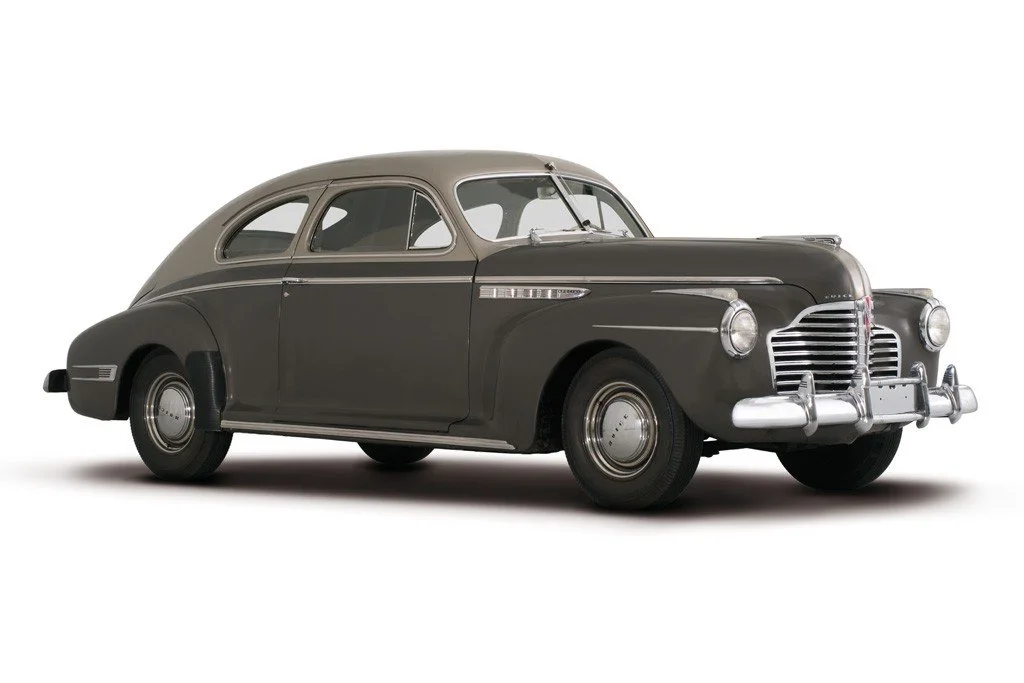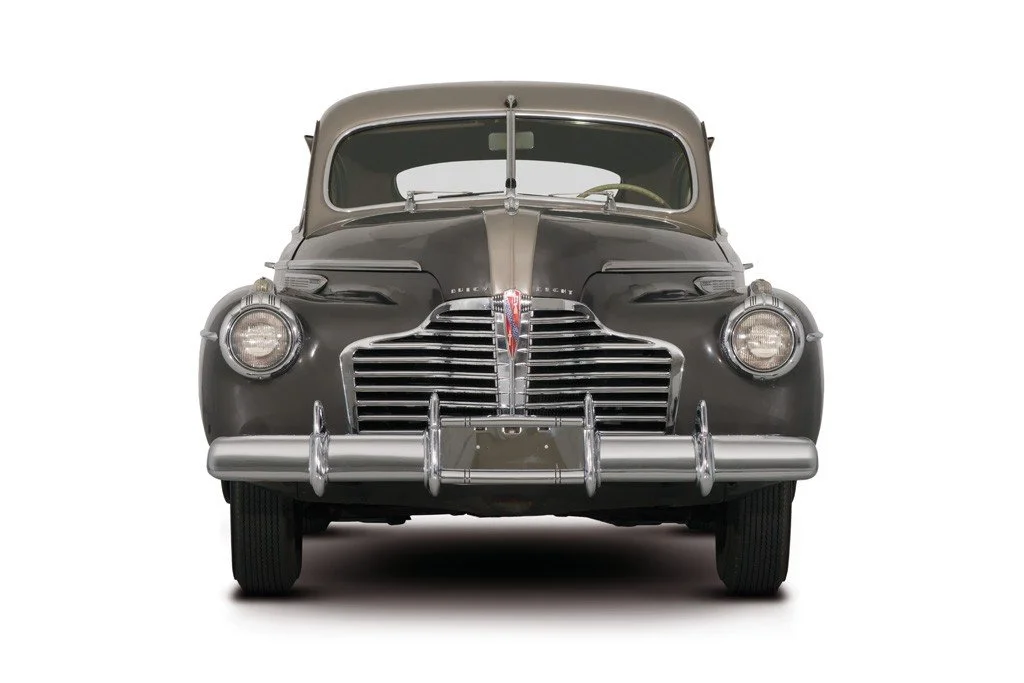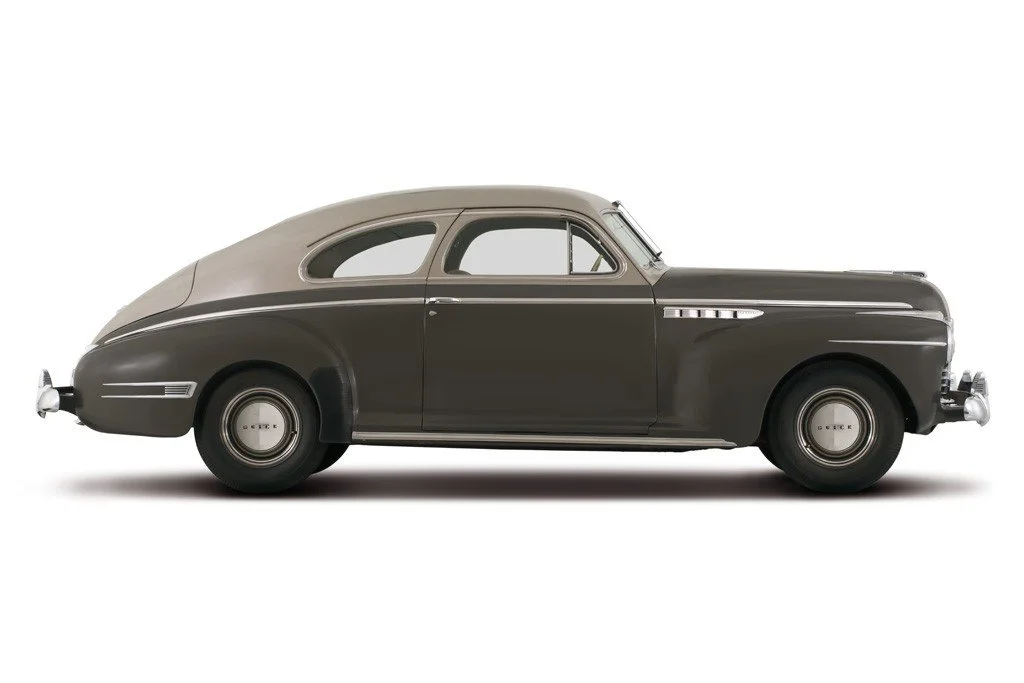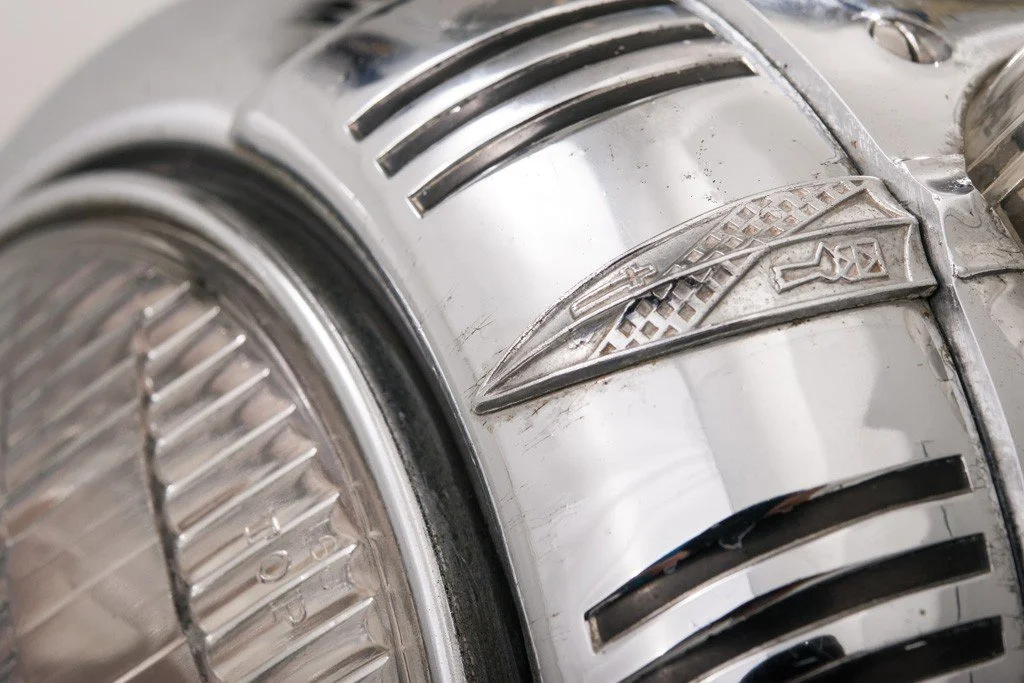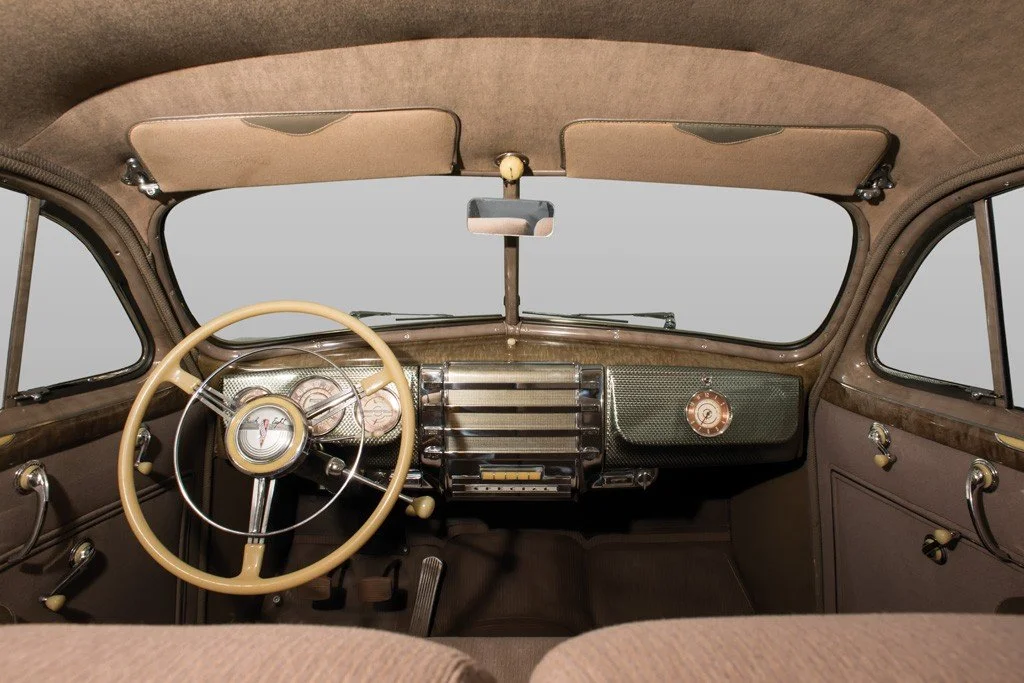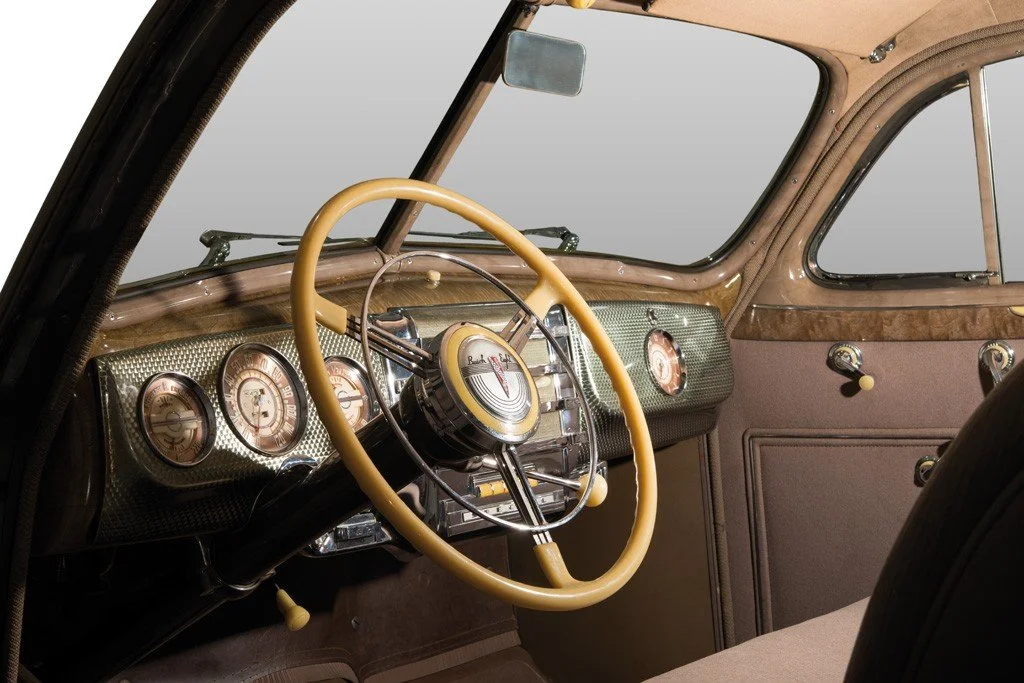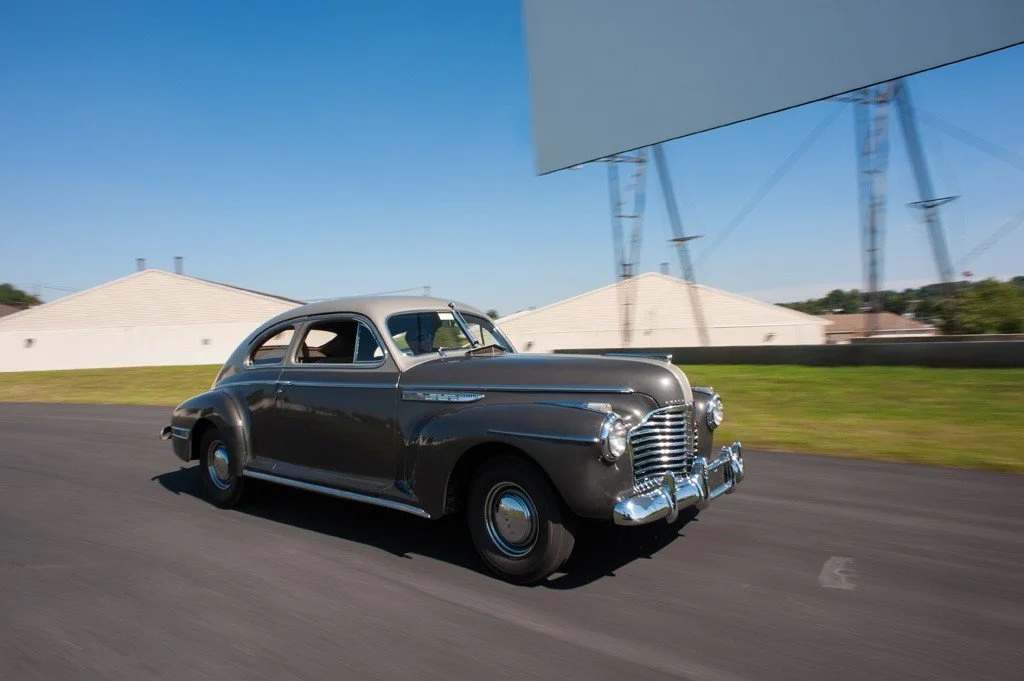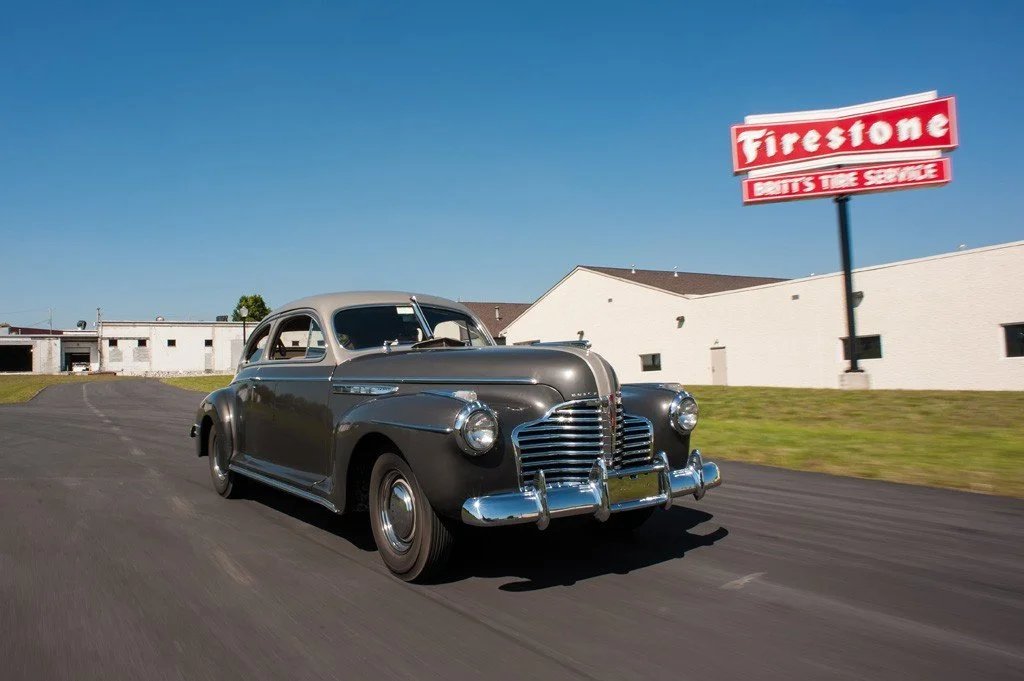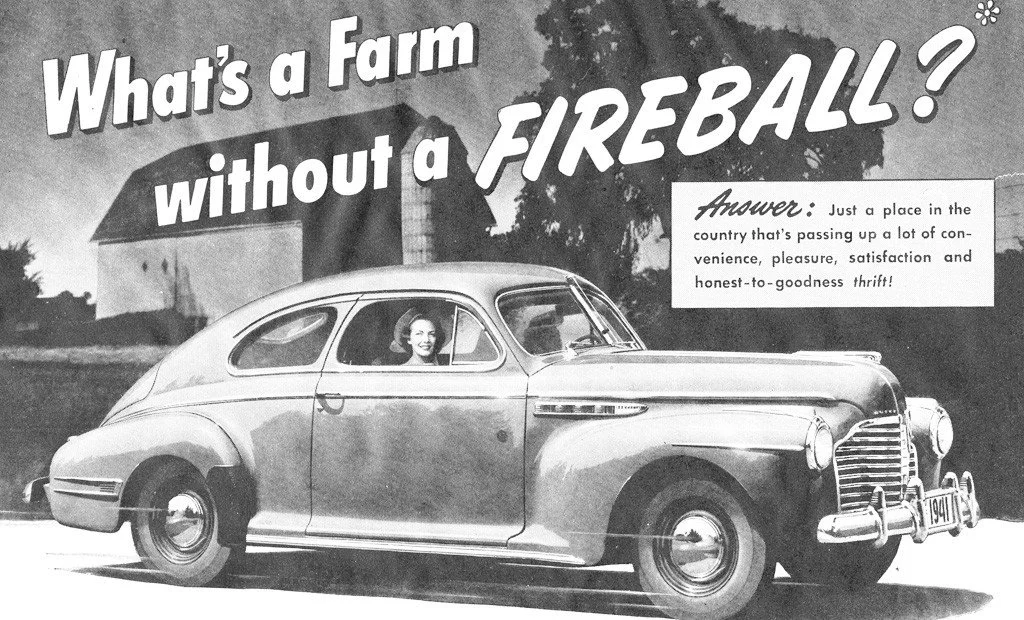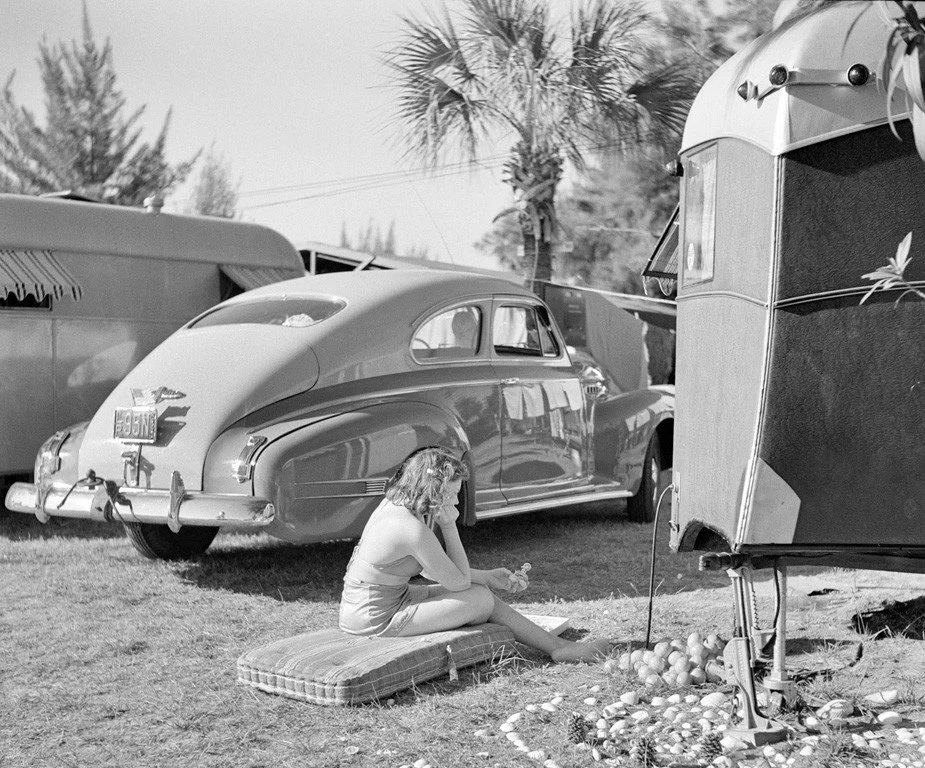-
Buick’s 1941 models were a hit, with the Special taking the lion’s share of the sales with more than 242,000 cars sold. The new beautiful style, the improved engine, and the low price gave the Special series an advantage over the other series. Exclusive to this Series was the new “sedanet” body style, that combined the rakish line of the fastback coupe with the sedan-like room of the sedan, with six place accommodation. The Nicola Bulgari Car Collection bought this 1941 Buick Model 46S Special Sedanet in 2005. The car has never been restored, and is all original with only 4,655 miles from new. Paint, interior, chrome and engine are the same as in 1941, when the car left the plant. The perfect condition can be attributed to the dry climate of Arizona, where the car spent her whole life. The original owner selected the few options that were available at the time, like two-tone paint, electric clock, and radio with the antenna on the windshield center post.
The crew at Precision Motor Cars have only performed routine maintenance to put the car back to like-new condition. -
Company
General MotorsWheelbase
118inInterior trim
Beige clothBrakes
front and rear drumsMake
BuickLength
202.5inEngine
inline 8 - 248cidTires
6.50x15Model
Special - Model 46SWidth
78inCarburetor
1 Carter 487 SOriginal Price
$1,006Body style
2-door SedanetWeight
3700lbsHorsepower
115hp @ 3500rpmProduction
87,687Model year
1941Exterior paint
Silver French Grey / Lancaster GreyTransmission
Synchro-shift 3-speed manual -
In 1941, Harlow Curtice was in his eighth year working as President for Buick Corporation. In his tenure, he managed to save Buick from certain death, with sales jumping from 40,000 cars in 1933 to well over 370,000. Buick’s destiny had changed when Simon Knudsen, President of General Motors, decided to appoint Harlow Curtice as President of Buick. His first move was to simplify the dealer network, and the second was a product rearrangement. He offered a cheap car, with a Chevrolet body installed on a Pontiac chassis, but with a straight-eight Buick engine. The proverbial Buick attention to detail and high quality of construction of the new Series 40 finally gave the Company some breathing room. Performance, thanks to the powerful engine and the light weight, was very good, and the car was a hot seller. In the following year, the Series 40 was renamed Special, and continued to be the best seller in the Buick line-up. Harley Earl, head of the General Motors Styling Studio, gave new life to the 1936 models, and as a result, sales jumped upwards, with almost 180,000 cars produced, good for a sixth place among car manufacturers. Buick cars were restyled once more for 1937, giving birth to some of the most beautiful cars of the thirties era. Sales were in the 220,000 range, and 175,000 for the following year, a drop caused by a nationwide recession. The 1939 models were restyled again, even if the previous year’s models were very modern looking. Longer, lower and more streamlined were the keywords for the new Buicks, and sales grew once more, with over 230,000 cars produced, and a fourth place among car manufactures. In 1940, the styling was updated, but keeping almost the same lines as the year before. The great news, this year, was the introduction of the new Super line, an intermediate model between the cheap Special and the sporty Century. The new Super accounted for a good part of Buick sales, with 130,000 cars produced, on a total of over 283,000 units built for the model year. In 1941 there was another full redesign of the Buick line, even if the grille bore some similarities to the previous year. Hood and fenders were more integrated with the body, and the headlights were fully enclosed, rather than being in visible pods. Running boards and external door hinges finally disappeared, and the body height was reduced.
The engines were fully revised, with new lighter pistons and thinner head gasket, giving more compression and in turn, more performance. Another innovation was the “Compound Carburation”, now standard on the larger series, and optional on the cheaper Special and Super Series. It consisted of a special intake manifold equipped with two carburetors, instead of just one as in the previous years. The engine ran at idle with just one carb, and the second one kicked in when the accelerator pedal was at about one third of its travel. The added fuel flow and the increase in compression gave the 1941 Buick the title of most powerful US production car, with 165 horsepower achieved by the large 320 cubic inch straight-eight engine used on the Century, Roadmaster, and Limited Series. “Compound Carburation” was also available as an option on the smaller 248 cubic inch engine, with an output of 125 horsepower. Model year 1941 saw a record production of more than 377,000 cars, behind Chevrolet, Ford and Plymouth. This year was also the last full year for car production, as in February 1942 the plants shut down for the conversion to military manufacturing, as ordered by the US Government in preparation for the Second World War.

